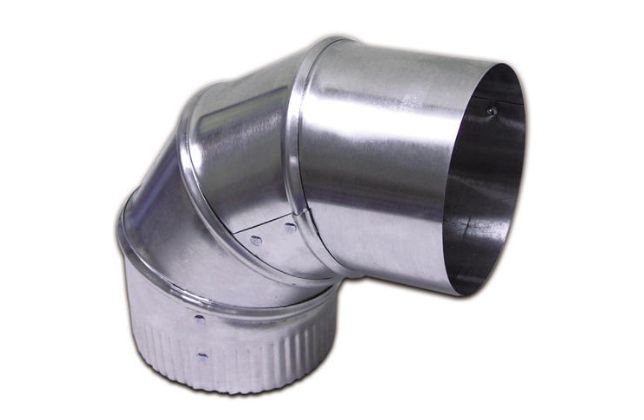Round Duct Elbow
Truestar Air Systems
Round Duct Elbow
An HVAC (heating, ventilation, and air conditioning) system uses a curved part called a round duct elbow to reroute airflow around obstructions or corners in the ductwork. Elbows are necessary to manoeuvre around bends and changes in direction so that air can pass through the duct system without obstruction. The following are important details and things to think about while using round duct elbows:

Shape: Curved fittings called round duct elbows are used in round ductwork systems to reorient the airflow. Standard angles like 45 degrees and 90 degrees are usually accessible, however additional angles could also be offered based on particular needs.
Construction: Sheet metal, such as stainless steel, aluminium, or galvanised steel, is commonly used to make round duct elbows. Specialised equipment is used to shape the metal into a curved shape, and welding or other techniques are used to join the seams to guarantee airtightness and structural stability.
Sizes: To suit a range of duct diameters and airflow needs, round duct elbows are available in a number of sizes. To maintain optimal airflow and reduce pressure drops, the elbow’s diameter should match the diameter of the round ductwork it is joining.
Angle: The amount of direction change for the airflow is determined by the elbow’s angle. Although bespoke angles might also be offered, common angles are 45 and 90 degrees. The design of the ductwork and the particular needs of the HVAC system should be taken into consideration while choosing the elbow’s angle.
Radius: The airflow through the duct system is influenced by the elbow’s curve’s radius. A bend with a larger radius has less airflow resistance and is smoother; a bend with a smaller radius is sharper and may result in higher pressure decreases. It’s critical to select an elbow whose radius is suitable for the intended use.
Installation: Wherever a ducting direction change is necessary, round duct elbows are fitted. In order to stop air leaks and preserve system efficiency, proper installation practices are crucial. These include sealing joints and connections. Elbows can be joined via slip-fit connectors, crimped ends, or flanged ends to other duct components including registers, reducers, or straight sections.

